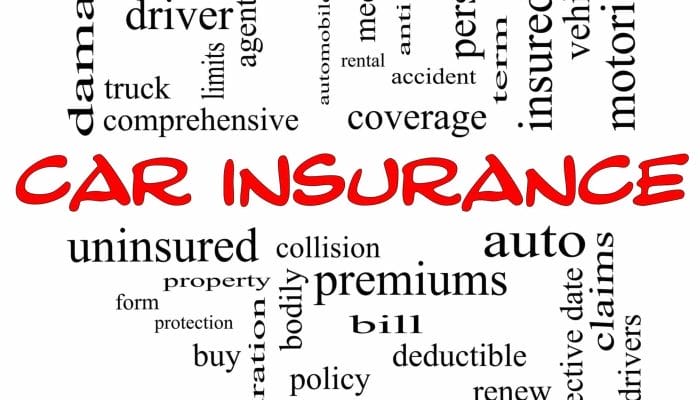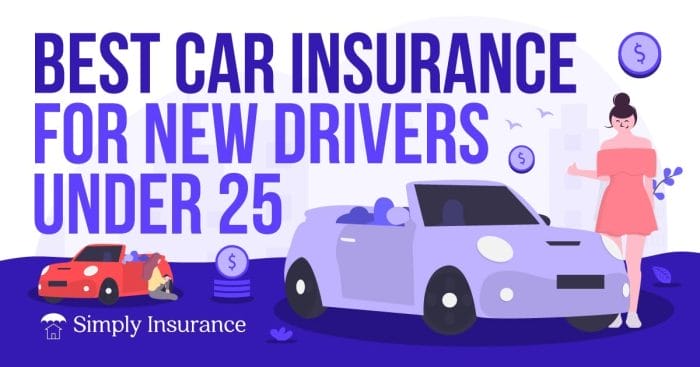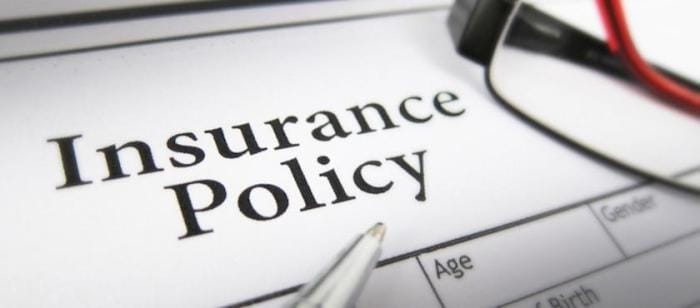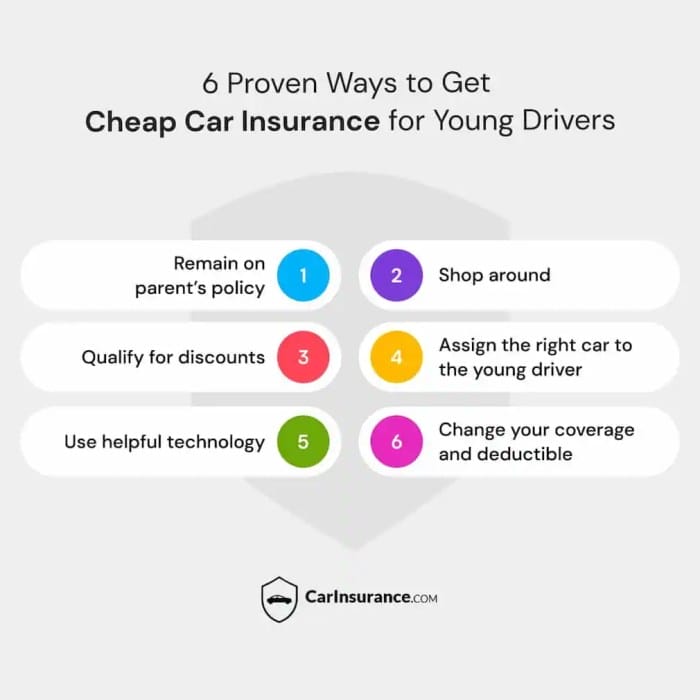As a new driver, securing affordable car insurance can be a daunting task. High insurance premiums can strain your budget, making it challenging to enjoy the freedom of owning a vehicle. This guide will provide valuable tips and strategies to help you find cheap car insurance without compromising coverage.
Whether you’re just starting or looking to reduce your current premiums, this comprehensive guide has everything you need to make informed decisions and save money on your car insurance.
With careful planning and smart choices, you can find an insurance policy that meets your needs and budget. From understanding insurance factors that impact premiums to exploring various coverage options and utilizing discounts, we’ll cover everything you need to know to navigate the world of car insurance as a new driver.
So buckle up and get ready to discover the secrets to securing cheap car insurance and hitting the road with peace of mind.
Introduction to Affordable Car Insurance for New Drivers

Navigating the world of car insurance as a new driver can be daunting. With limited experience behind the wheel, young drivers often face the challenge of securing affordable car insurance. The lack of a comprehensive driving history can result in higher premiums, posing a significant financial burden for those just starting their driving journey.
The financial implications of high insurance premiums for young drivers can be substantial. The increased cost of coverage can strain budgets, making it challenging to manage other financial obligations, such as rent, groceries, and student loans. Additionally, higher premiums can discourage young drivers from purchasing adequate coverage, potentially leaving them vulnerable in the event of an accident.
Factors Affecting Insurance Premiums for New Drivers
Several factors contribute to the higher insurance premiums for new drivers. These include:
- Age and Experience: Younger drivers, particularly those under the age of 25, are considered higher risk due to their limited experience and increased likelihood of being involved in accidents.
- Driving Record: Any history of traffic violations or accidents can significantly increase insurance premiums, especially for new drivers.
- Vehicle Type: Sports cars, high-performance vehicles, and expensive models typically carry higher insurance rates compared to more economical options.
- Location: Insurance premiums can vary depending on the geographic location, with urban areas generally having higher rates due to increased traffic congestion and accident risks.
Understanding Insurance Factors Impacting Premiums
Insurance premiums for new drivers are influenced by a combination of factors that reflect their risk profile. These factors include age, driving experience, vehicle type, location, and driving record. Understanding these factors can help new drivers make informed decisions to reduce their insurance costs.
Age and Driving Experience
Age and driving experience are closely correlated with insurance rates. Younger drivers, typically those under the age of 25, are considered higher-risk drivers due to their lack of experience and higher likelihood of accidents. As drivers gain experience and age, their insurance rates tend to decrease.
Vehicle Type
The type of vehicle a new driver chooses can also impact their insurance rates. Sports cars, high-performance vehicles, and luxury cars are generally more expensive to insure than sedans, hatchbacks, and minivans. This is because these vehicles are often associated with higher repair costs and a greater risk of accidents.
Location
The location where a new driver lives can also affect their insurance rates. Areas with higher rates of accidents, theft, and vandalism tend to have higher insurance premiums. Additionally, drivers who live in urban areas typically pay more for insurance than those in rural areas due to the increased risk of accidents and traffic congestion.
Driving Record
A new driver’s driving record is a significant factor in determining their insurance rates. Drivers with a history of accidents, traffic violations, or DUI convictions will likely pay higher premiums. Conversely, drivers with a clean driving record can expect lower insurance rates.
Exploring Insurance Options for New Drivers

Navigating the world of car insurance as a new driver can be daunting. Understanding the various coverage options and insurance policies available can help you make informed decisions and secure affordable car insurance.
Different types of insurance policies provide varying levels of protection for your vehicle and liability in case of accidents. Liability insurance is mandatory in most states and covers damages or injuries caused to others in an accident. Collision insurance covers damages to your own vehicle resulting from a collision, while comprehensive insurance protects against theft, vandalism, and other non-collision-related damages.
Additional Coverage Options
- Uninsured/Underinsured Motorist Coverage: This coverage protects you in case you are involved in an accident with a driver who does not have insurance or has insufficient coverage.
- Personal Injury Protection (PIP): PIP coverage helps cover medical expenses and lost wages for you and your passengers in case of an accident, regardless of who is at fault.
- Rental Reimbursement: If your vehicle is damaged in an accident and is not drivable, this coverage can help reimburse you for the cost of renting a replacement vehicle.
Strategies for Reducing Insurance Premiums

New drivers can take proactive steps to lower their insurance premiums and ensure affordable coverage. Maintaining a clean driving record, enrolling in defensive driving courses, and exploring various insurance options are effective strategies to achieve this goal.
Maintaining a Clean Driving Record
Preserving a clean driving record is crucial for new drivers seeking lower insurance premiums. This includes avoiding traffic violations, accidents, and moving violations. Obeying traffic laws, practicing defensive driving techniques, and maintaining a safe driving record can significantly impact insurance rates.
Defensive Driving Courses and Driver Education Programs
Enrolling in defensive driving courses or completing driver education programs can be beneficial for new drivers. These courses teach safe driving techniques, accident avoidance strategies, and defensive driving skills. Completing these programs may lead to insurance discounts and demonstrate a commitment to responsible driving, resulting in lower premiums.
Utilizing Discounts and Savings Opportunities

In the realm of car insurance, cost-consciousness is a virtue. By capitalizing on discounts and savings opportunities, new drivers can navigate the insurance landscape without breaking the bank. From good student discounts to multi-car policies, these strategies unlock savings that make a tangible difference.
Insurance companies recognize and reward responsible behavior. Maintaining good grades, for instance, can unlock significant discounts. Multi-car policies offer savings for insuring multiple vehicles under one policy. Bundling insurance policies, such as car and home insurance, often leads to reduced premiums.
Good Student Discounts
Many insurance companies offer discounts to students who maintain a certain GPA or are enrolled in an accredited educational program. These discounts can range from 5% to 25%, depending on the company and the student’s academic record.
Multi-Car Discounts
If you have more than one car in your household, you may be eligible for a multi-car discount. This discount typically ranges from 5% to 15% for each additional car you insure with the same company.
Bundling Insurance Policies
Bundling your car insurance with other types of insurance, such as home insurance or renters insurance, can often lead to significant savings. The exact amount of savings you’ll receive will vary depending on the company and the policies you’re bundling, but it’s typically in the range of 5% to 15%.
Shopping Around for Competitive Rates

Navigating the world of car insurance as a new driver can be daunting. One crucial step in securing affordable coverage is shopping around for competitive rates from multiple insurance companies.
Obtaining quotes from various providers allows you to compare premiums, coverage options, and policy terms. This comparison process empowers you to make an informed decision that aligns with your budget and insurance needs.
Considering Factors Beyond Cost
While cost is a significant factor, it should not be the sole determinant when selecting an insurance provider. Consider additional aspects such as:
- Customer Service: Assess the company’s reputation for responsive and helpful customer service. Positive experiences during policy inquiries, claims processing, and other interactions can greatly enhance your overall satisfaction.
- Claims Handling Procedures: Research the company’s claims handling procedures and track record. A provider known for efficient and fair claims processing can provide peace of mind in the event of an accident.
- Financial Stability: Choose an insurance company with a solid financial standing. This ensures the company’s ability to honor claims and provide reliable coverage throughout the policy period.
Considering Usage-Based Insurance Programs
Usage-based insurance (UBI) programs track driving behavior using telematics devices installed in vehicles. These devices collect data on factors such as mileage, acceleration, braking, and cornering. Based on this data, insurers can offer potential savings to safe drivers who demonstrate responsible driving habits.
Benefits of UBI Programs for New Drivers
- Pay-as-you-drive: UBI programs can be beneficial for new drivers who have lower mileage and drive less frequently. They may qualify for lower premiums based on their actual driving habits rather than traditional factors like age and gender.
- Encourages Safe Driving: UBI programs promote safe driving by providing financial incentives for responsible behavior. New drivers can learn good driving habits early on and potentially save money in the long run.
- Personalized Premiums: UBI programs offer personalized premiums based on individual driving behavior, which can be fairer and more accurate than traditional rating factors.
Enhancing Insurance Coverage with Safety Features
Installing safety features in your vehicle can not only enhance your overall driving experience and protect you and your passengers in the event of an accident, but it can also have a positive impact on your car insurance premiums. Many insurance companies offer discounts or reduced rates to drivers who have certain safety features installed in their vehicles, recognizing the reduced risk associated with these features.
Types of Safety Features That Can Lower Insurance Premiums
Here are some examples of safety features that can potentially lower your insurance premiums:
- Anti-lock brakes (ABS): ABS prevents wheels from locking during braking, allowing drivers to maintain control of their vehicles and reducing the risk of skidding.
- Airbags: Airbags provide additional protection for drivers and passengers in the event of a collision, reducing the risk of serious injury or death.
- Anti-theft devices: Anti-theft devices, such as alarms, immobilizers, and tracking systems, can deter theft and reduce the risk of your vehicle being stolen.
- Electronic stability control (ESC): ESC helps drivers maintain control of their vehicles by detecting and correcting skids and loss of control.
- Lane departure warning (LDW): LDW alerts drivers when they are drifting out of their lane, helping to prevent accidents caused by unintentional lane changes.
- Forward collision warning (FCW): FCW warns drivers of potential collisions with other vehicles or objects, giving them time to react and avoid accidents.
- Adaptive headlights: Adaptive headlights automatically adjust their beam pattern to provide optimal visibility while driving at night, reducing the risk of accidents caused by poor visibility.
By installing these safety features in your vehicle, you demonstrate to your insurance company that you are a responsible driver who is committed to safety. As a result, you may be eligible for lower insurance premiums and enjoy the peace of mind that comes with knowing that you and your vehicle are well-protected.
Building a Positive Insurance History

Establishing and maintaining a solid insurance history is essential for securing affordable car insurance rates. A history of continuous coverage demonstrates your reliability as a driver and reduces the perceived risk associated with insuring you.
Insurance companies favor drivers who have maintained consistent coverage because it indicates a lower likelihood of filing claims. This perception of lower risk translates into lower premiums for policyholders.
Benefits of Maintaining Continuous Coverage:
- Lower Premiums: Insurance companies reward drivers with a history of continuous coverage by offering lower premiums. This is because they view these drivers as less risky to insure.
- Improved Coverage Options: Drivers with a positive insurance history may be eligible for additional coverage options and discounts that are not available to those with gaps in their coverage.
- Easier Renewal Process: Maintaining continuous coverage simplifies the renewal process, as insurance companies are more likely to renew policies for drivers with a positive history.
In summary, building a positive insurance history by maintaining continuous coverage is a smart financial move that can save you money on car insurance premiums and provide access to better coverage options.
Additional Tips for Managing Insurance Costs

Adopting cost-effective driving habits and exploring alternative insurance options can help new drivers navigate the complexities of car insurance. Here are some additional strategies to further reduce insurance costs.
Reducing Car Usage
Curbing car usage can be an effective way to lower insurance premiums. By minimizing the number of miles driven, new drivers can reduce the risk of accidents and associated claims, potentially leading to lower insurance rates.
- Carpooling: Sharing rides with friends, family, or colleagues can significantly reduce the number of miles driven, thus lowering insurance premiums.
- Public Transportation: Utilizing public transportation, such as buses, trains, or ride-sharing services, can help new drivers reduce their car usage and potentially lower insurance costs.
- Walking or Biking: Embracing active transportation options, such as walking or biking, for short distances can further minimize car usage and insurance premiums.
Choosing a Higher Deductible
Opting for a higher deductible can lower monthly insurance payments. A deductible is the amount the policyholder is responsible for paying out of pocket before the insurance company covers the remaining costs. By selecting a higher deductible, the insurance company assumes less risk, resulting in lower premiums.
- Weighing the Pros and Cons: New drivers should carefully consider the trade-off between lower monthly payments and the potential financial burden of a higher deductible in the event of an accident.
- Evaluating Financial Situation: Drivers should assess their financial situation to ensure they can comfortably afford the higher deductible if an accident occurs.
Final Summary

In conclusion, finding cheap car insurance for new drivers is possible with careful planning and informed decisions. By understanding insurance factors, exploring coverage options, utilizing discounts, and shopping around for competitive rates, you can secure affordable coverage without compromising your protection.
Additionally, consider usage-based insurance programs, enhance your insurance coverage with safety features, and build a positive insurance history to further reduce your premiums. Remember, safe driving is the key to maintaining low insurance costs. Embrace responsible driving habits, and you’ll be well on your way to enjoying the freedom of the open road without breaking the bank.
FAQ
Q: What is the most significant factor that affects car insurance premiums for new drivers?
A: Age is the most significant factor that affects car insurance premiums for new drivers. Younger drivers are considered higher risk and typically pay higher premiums due to their lack of experience and increased likelihood of accidents.
Q: How can new drivers reduce their insurance premiums?
A: New drivers can reduce their insurance premiums by maintaining a clean driving record, taking defensive driving courses, and opting for vehicles with safety features. Additionally, bundling insurance policies and shopping around for competitive rates can also lead to significant savings.
Q: What is usage-based insurance (UBI), and how can it benefit new drivers?
A: Usage-based insurance (UBI) programs track driving behavior and offer potential savings for safe drivers. By monitoring factors like mileage, braking habits, and acceleration patterns, UBI programs reward responsible driving with lower premiums. New drivers with good driving habits may find UBI programs advantageous.
Q: How can new drivers build a positive insurance history?
A: New drivers can build a positive insurance history by maintaining a consistent insurance policy over time. Continuous coverage demonstrates responsibility and can lead to lower premiums in the future. Additionally, maintaining a clean driving record and avoiding accidents or violations will contribute to a favorable insurance history.
Q: What are some additional tips for managing insurance costs as a new driver?
A: New drivers can further manage their insurance costs by reducing car usage, such as carpooling or using public transportation. Additionally, opting for a higher deductible can lower monthly insurance payments. However, it’s important to choose a deductible that you can comfortably afford in case of an accident.



